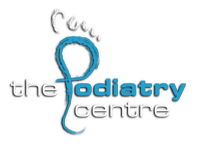Weak Buttocks Ruin the Runner
Building better Glutes – Part 2.
The gluteus medius should be considered in every running injury. This muscle is under-appreciated by runners or active people because it isn’t large or is well known for producing tone and bulk. This muscle is very much like the tow bar or tow ball between a car and a trailer, without it being secured properly, the weakness in the link jeopardizes the stability of the trailer.
During running, the role of the gluteus medius is to ac as a pelvic stabiliser. So for example, whilst your running and on the right leg, it stops the left side pelvis from tilting down tilt more than seven to eight degrees from parallel to the ground. If the gluteus medius is not functioning well enough to achieve this control, the athlete is said to have a ‘Trendelenburg gait’. Often, but not always, you may see the same weakness in walking (producing a waddling motion or, in extremis, a limp), and the dysfunction will then be more marked when they run.
A podiatrist will analyse and test the function of the glueus medius manually and functionally. This is a tricky task because often people have adapted a technique to compensate for the weak muscle and compensate by over-using other muscles to avoid droping the pelvis. Often a video analysis is used to assess this.
Some of the common signs and associated injuries are listed below:
– Trendelenburg (pelvic tilt) : Lumbar spine, sacroiliac joint (SIJ), greater trochanter bursa, insertion of muscle on greater trochanter, overactivity of piriformis and tensor fascia lata (TFL)
– Medial knee drift (valgus position of tibiofemoral joint) : Lateral tibiofemoral compartment (via compression), patellofemoral joint, patella tendon and fat pad, pes anserinus, iliotibial band (ITB)
– Lateral knee drift (varus position of tibiofemoral joint) : Medial tibiofemoral compartment (via compression), ITB, posterolateral compartment, popliteus
– Same-sided shift of trunk (lateral flexion of trunk): Lumbar spine (increased disc and facet joint compression), SIJ (increased shear)
A runner’s technique may demonstrate a combination of adaptations, such as a mild Trendelenburg, medial knee drift and an ipsilateral (same-sided) trunk shift.
Runners with poor dynamic pelvis stability, for which gluteus medius is vital, will decrease their stride length and adopt a more shuffling pattern to reduce the ground reaction force at contact and thereby the muscle control required to maintain pelvic posture. As a result the athlete is at increased risk of any condition relating to excessive and/or prolonged pronation of the foot, such as medial tibial stress syndrome or Achilles tendinitis.
The moral of the story, must exercise the glut medius in order to prevent stress and overloading other muscles and joints. When I go running and I see other runners with classic signs of a weak glut medius, i just want to tap them on the shoulder and enlighten them on their biomechanical problems but for now, I will use our blogs to share my knowledge.
Dr Vanessa Hadchiti (Podiatrist)


